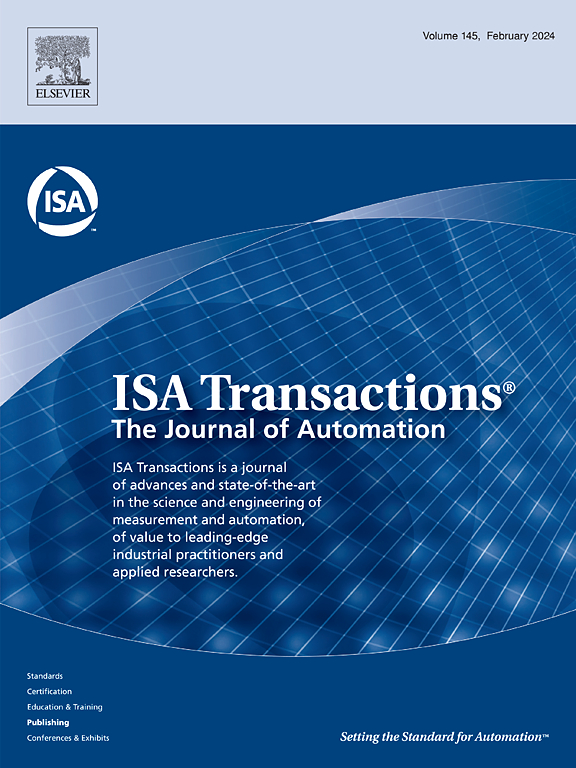Fault reconstruction approach for saturated dynamic systems using adaptive estimation and optimization
IF 6.3
2区 计算机科学
Q1 AUTOMATION & CONTROL SYSTEMS
引用次数: 0
Abstract
Modern industrial systems are becoming more complex and expensive, which have higher requirements on safety and reliability, and less tolerance on system performance degradation due to anomalies and faults. As a result, there is a strong motivation to address real-time monitoring and diagnosis techniques to detect a fault at an early stage and assess the severity of the faulty component. In this paper, real-time input and output data are used to monitor real-time and reconstruct faults for saturated dynamic systems using adaptive estimation and optimization techniques. Specifically, the saturation signals are partitioned into the conventional inputs without saturation and the beyond-saturation input signals. An unknown input decoupling approach is used to decouple unknown input uncertainty partially, and adaptive techniques are addressed to simultaneously reconstruct the additive faults and the beyond-saturation input signals. The estimator gains are obtained via the optimization for solving strict linear matrix inequalities to attenuate the effect from un-decoupled uncertainty to the estimation error dynamics. It is worth highlighting that the saturated input signals can also be reconstructed, which is particularly important when the saturated inputs cannot be measured directly, or it is costly to install extra sensors for the measurement. The proposed approach is to design offline, but implement using real-time input and output data, implying excellent real-time performance. The effectiveness of the proposed algorithm is demonstrated by an aircraft system and a single-link flexible joint robotic system.
基于自适应估计和优化的饱和动态系统故障重构方法。
现代工业系统越来越复杂和昂贵,对安全性和可靠性的要求越来越高,对系统因异常和故障而导致的性能下降的容忍度越来越小。因此,有强烈的动机来处理实时监控和诊断技术,以便在早期阶段检测故障并评估故障组件的严重程度。本文采用自适应估计和优化技术,利用实时输入输出数据对饱和动态系统进行实时监测和故障重构。具体来说,将饱和信号分为常规的非饱和输入和超饱和输入。采用未知输入解耦方法对未知输入不确定性进行部分解耦,并采用自适应技术对加性故障和超饱和输入信号进行同步重构。通过求解严格线性矩阵不等式的优化来获得估计器增益,以减弱未解耦不确定性对估计误差动态的影响。值得强调的是,饱和输入信号也可以重建,当饱和输入不能直接测量时,或者安装额外的传感器进行测量时,这一点尤为重要。所提出的方法是离线设计,但使用实时输入和输出数据来实现,具有良好的实时性。通过飞机系统和单连杆柔性关节机器人系统验证了该算法的有效性。
本文章由计算机程序翻译,如有差异,请以英文原文为准。
求助全文
约1分钟内获得全文
求助全文
来源期刊

ISA transactions
工程技术-工程:综合
CiteScore
11.70
自引率
12.30%
发文量
824
审稿时长
4.4 months
期刊介绍:
ISA Transactions serves as a platform for showcasing advancements in measurement and automation, catering to both industrial practitioners and applied researchers. It covers a wide array of topics within measurement, including sensors, signal processing, data analysis, and fault detection, supported by techniques such as artificial intelligence and communication systems. Automation topics encompass control strategies, modelling, system reliability, and maintenance, alongside optimization and human-machine interaction. The journal targets research and development professionals in control systems, process instrumentation, and automation from academia and industry.
 求助内容:
求助内容: 应助结果提醒方式:
应助结果提醒方式:


